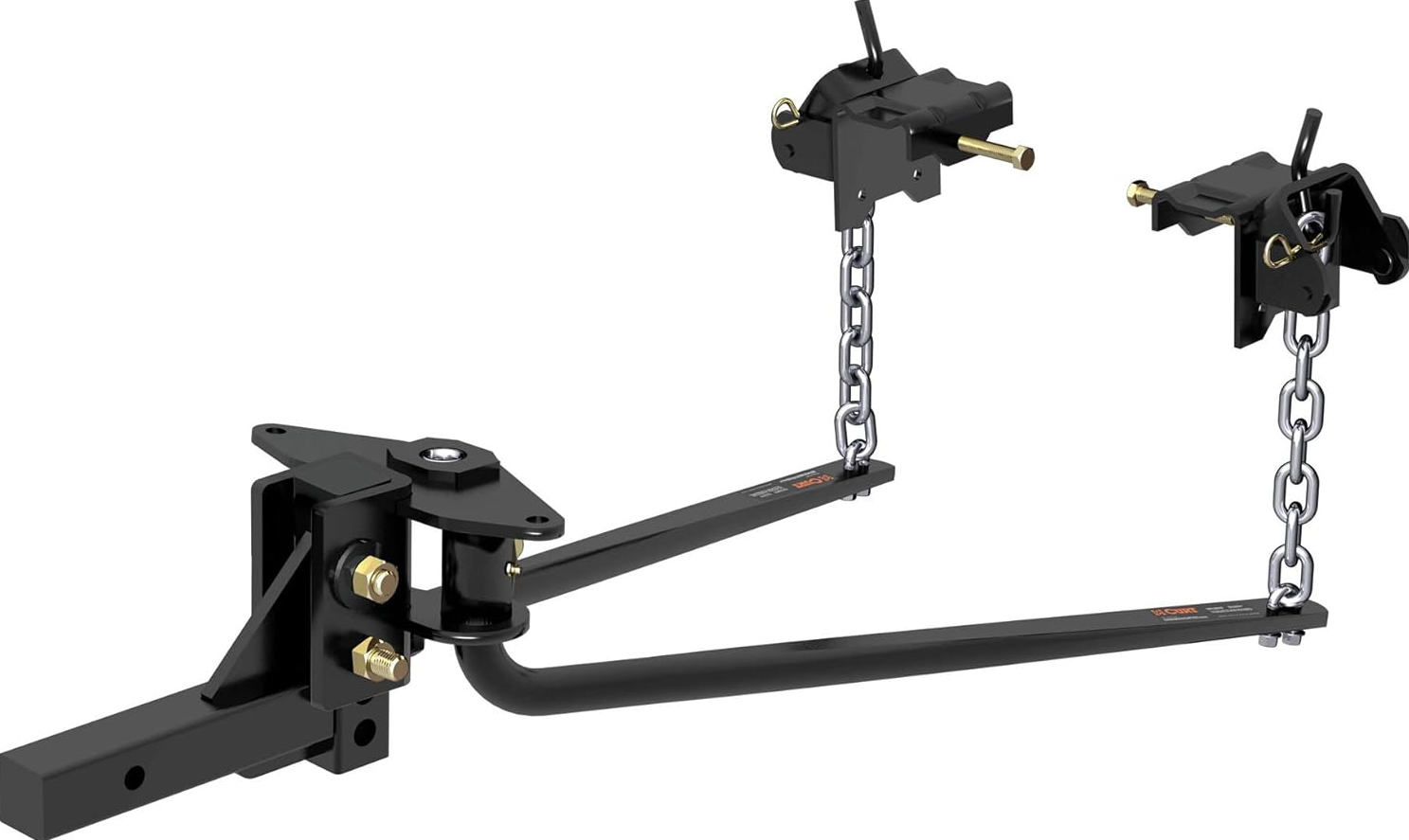Have you ever towed a trailer that felt unstable, swaying back and forth and making you nervous? It’s not a fun experience! Towing a poorly balanced trailer can be dangerous.
But there’s an easy solution – a weight distribution hitch. This special type of hitch helps stabilize your trailer so you can tow it safely and comfortably.
Let’s dive in and learn all about these handy hitches!
What is a Weight Distribution Hitch?

A weight distribution hitch, also known as a load equalizing hitch, is a special towing setup that helps balance the weight of your trailer.
It uses spring bars and extra brackets to spread the trailer weight evenly between your tow vehicle’s front and rear axles. This keeps your trailer level and stable, even with heavy loads.
What Can a Weight Distribution Hitch Help With?
- Reduces trailer sway and wobbling.
- Keeps your trailer level, preventing sagging or tipping.
- Improves steering control and braking.
- Allows you to tow heavier loads safely.
- Makes towing more comfortable and less stressful.
How Does a Weight Distribution Hitch Work?
A weight distribution hitch has a few key parts:
- Receiver: Attaches to your tow vehicle.
- Shank: Fits into the receiver.
- Spring bars: Connect to the shank and trailer to balance the weight.
- Frame brackets: Attach spring bars to the trailer frame.
The spring bars use leverage to shift some trailer weight from the rear of your tow vehicle to the front axle.
This distributes the weight evenly, like a see-saw. The result is a balanced, level, and stable towing setup.
Key Towing Capacity Ratings to Know
To choose the right hitch, you need to know your trailer and tow vehicle’s capacity ratings:
| Rating | What it Means |
|---|---|
| GTW (Gross Trailer Weight) | Total weight of the loaded trailer |
| GVWR (Gross Vehicle Weight Rating) | Max loaded weight of tow vehicle |
| GCWR (Gross Combined Weight Rating) | Max loaded weight of tow vehicle + trailer |
| Towing Capacity | How much your vehicle can safely tow |
Always stay within the lowest rated capacity of your setup.
For example:
- If your hitch is rated for 5,000 lbs but your vehicle can only tow 3,500 lbs, you must not exceed 3,500 lbs.
- If your trailer weighs 7,000 lbs but your hitch and vehicle are only rated for 5,000 lbs, you can’t safely tow that trailer.
Other Important Towing Weights
- Tongue Weight: The downward force the trailer puts on the hitch ball. Should be 10-15% of GTW.
- Payload Capacity: How much cargo weight your tow vehicle can carry. Includes passenger weight.
What Does a Weight Distribution Hitch Look Like?
A typical weight distribution hitch has:
- Receiver
- Weight distribution shank
- Head assembly with spring bar mounts
- Spring bars (round or trunnion style)
- Trailer frame brackets
- Hitch ball
Some hitches include sway control bars or other extra features. Basic setups use chains to attach the spring bars to the trailer, while some premium models have special L-brackets.
Weight Distribution Hitches for Specific Trailers
Some hitches are designed for a specific trailer and tow vehicle combo. The included shank will be the perfect height to make everything level.
But if you need a different height, don’t worry! You can get an adjustable aftermarket shank that will do the job. It’s important to get the height correct so your setup is level for the best performance.
Choosing the Right Weight Distribution
Hitch To pick the perfect hitch, consider:
- Your trailer’s GTW
- Your tow vehicle’s towing capacity
- Tongue weight (should be 10-15% of GTW)
- Desired sway control (some hitches have built-in sway control)
- Ease of installation and setup
Make sure to pick a hitch rated for your trailer weight. A hitch rated too low is unsafe. When in doubt, go for the higher rated hitch.
Installing a Weight Distribution
Hitch Installing a weight distribution hitch takes some work, but most handy people can do it.
You’ll need to:
- Install the receiver on your tow vehicle.
- Slide in the weight distribution shank.
- Attach the head assembly.
- Connect spring bars and adjust lengths.
- Install frame brackets on the trailer.
- Attach the trailer to the hitch and check the height.
- Adjust the hitch angle and spring bar tension for a level trailer.
Some hitches, like dual cam hitches, are trickier to install. Consider having a professional install these.
Also Check:
- What is The Cost To Install A Gooseneck Hitch
- What is a Tow Package
- How Do I Measure For A Drop Hitch
Conclusion:
A weight distribution hitch is a must-have for anyone towing a medium to heavy trailer. It will transform your towing experience, making it safer and more comfortable.
By evenly distributing your trailer’s weight, it eliminates sway and keeps everything level. This gives you better handling and control.
While a weight distribution hitch can’t increase your tow vehicle’s max towing capacity, it allows you to tow heavy loads more confidently. You can drive at normal speeds without worrying about trailer sway.
When shopping for a weight distribution hitch, make sure to match it to your trailer weight and tow vehicle capacity.
Consider sway control and ease of setup as well. With the right hitch, you’ll be ready to tow like a pro on all your adventures!
Happy towing!
